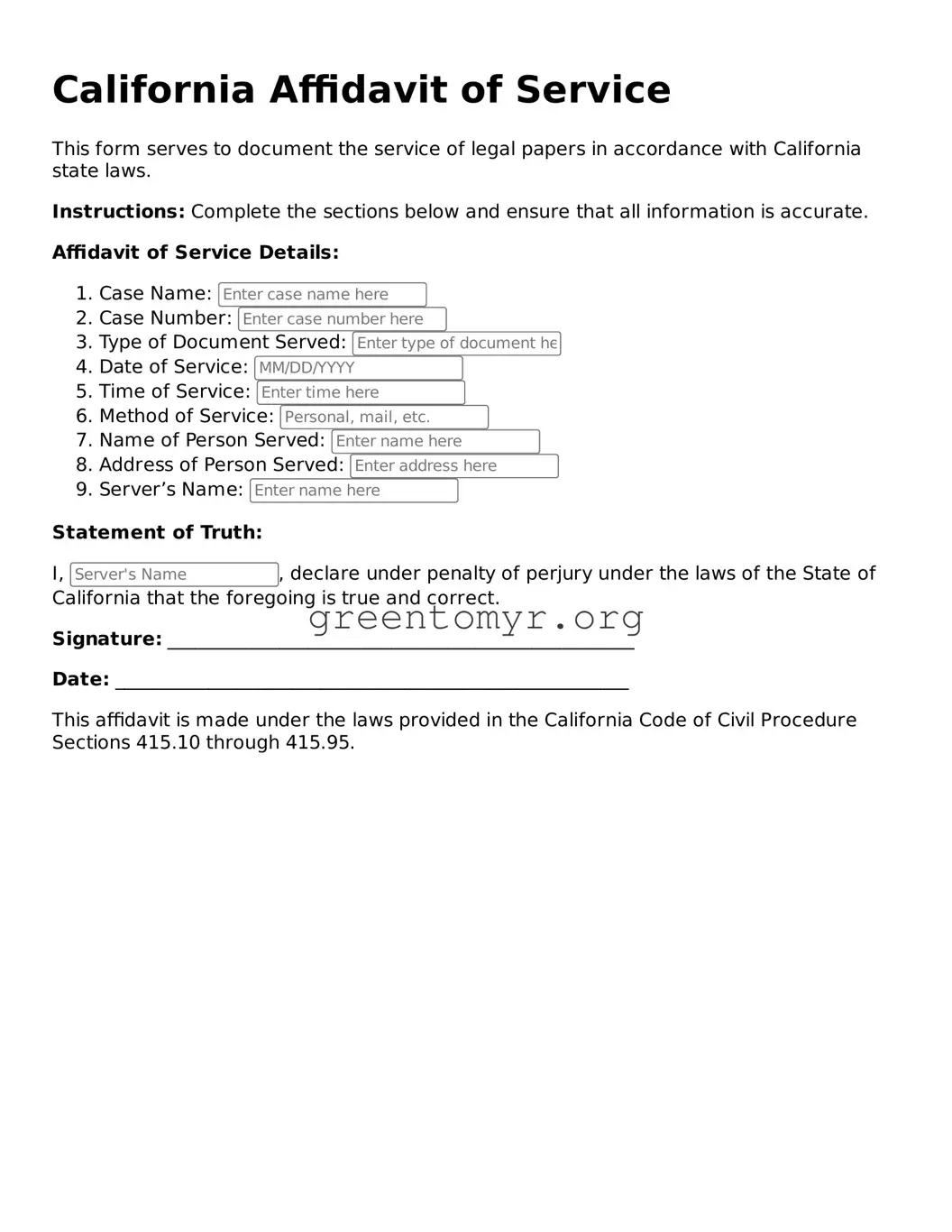What is a California Affidavit of Service?
A California Affidavit of Service is a legal document that verifies that a person has been served with legal papers, such as a summons or complaint. This form provides proof that the recipient has received the necessary documents in a way that complies with California law.
Who can serve legal documents in California?
In California, various individuals can serve legal documents, including:
-
Registered process servers
-
Law enforcement officers
-
Individuals who are over the age of 18 and not a party to the action
It is essential that the server meets these criteria to ensure the validity of the service.
How do I complete the Affidavit of Service?
To complete the California Affidavit of Service, follow these steps:
-
Fill in the case information, including the court name and case number.
-
Provide details about the person who received the documents, including name and address.
-
Specify how the service was performed, including the date and time.
-
Sign the affidavit in the presence of a notary public if required.
Make sure all information is accurate to avoid any delays or issues with the legal process.
Is notarization required for the Affidavit of Service?
Notarization is not always required for the Affidavit of Service in California. However, certain courts may mandate it. It is advisable to check with the specific court where the case is filed to understand their requirements.
What happens if the documents are not served correctly?
If the documents are not served correctly, the court may not accept the Affidavit of Service. This can lead to delays in the legal process or potentially dismiss the case. Accurate and proper service is critical to proceeding with legal actions.
How long do I have to serve legal documents in California?
The general rule in California requires that legal documents be served within 60 days after the filing of the initial case. However, specific time frames can vary based on the type of case, so it’s important to consult the court rules relevant to your situation.
Where do I file the Affidavit of Service?
The Affidavit of Service should be filed with the court where the legal action is pending. After serving the documents, the server must submit the completed affidavit to the court, confirming that service has been properly executed.
While different courts may have their specific requirements, using the official California Affidavit of Service form is generally recommended. This ensures compliance with state laws and court rules. If you are uncertain, consult the court clerk for guidance.
What do I do if the person refuses to accept service?
If the person being served refuses to accept the documents, you may still proceed with service by using alternative methods allowed under California law. Such methods include mail service, or in some cases, you may request a court order for substituted service. Consult a legal professional for advice on the best course of action.
